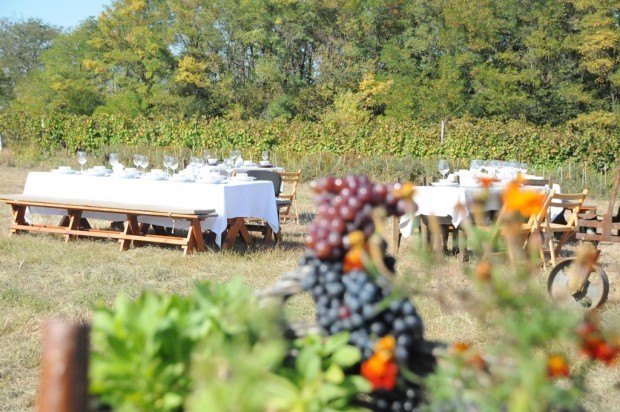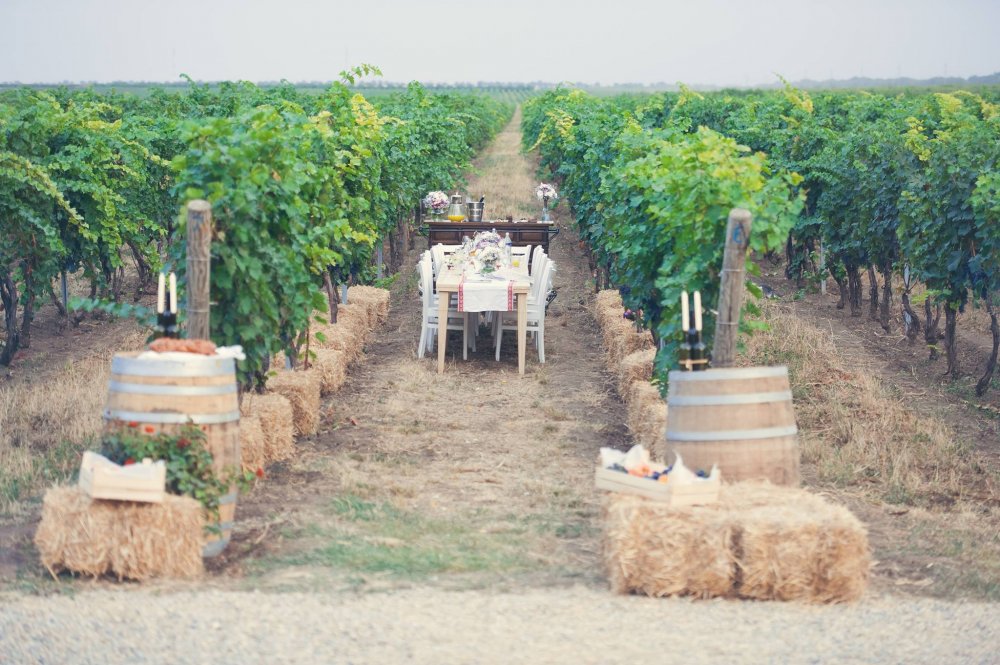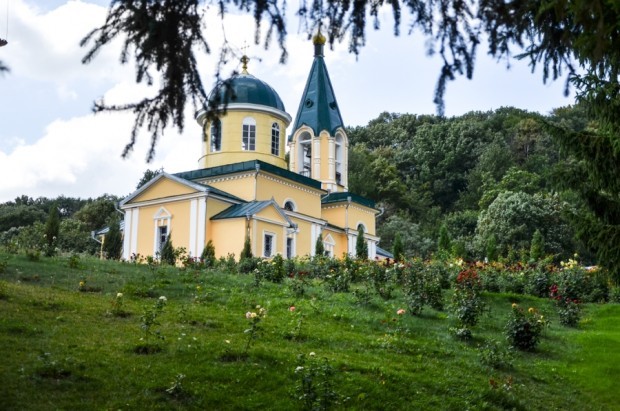We have prepared the most detailed list of tourist destinations and beautiful places in Moldova, places that are definitely worth visiting, specially as a foreign tourist.
1. Cricova Winery
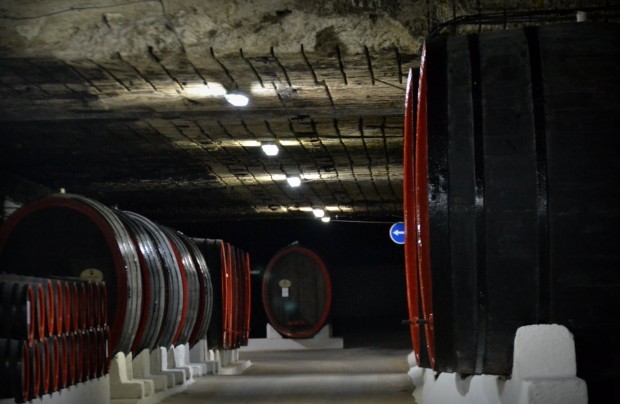

 The wine cellars of Cricova are the second largest wine cellar in Moldova, after Milestii Mici (the largest in the world). It boasts 120 kilometres (75 mi) of labyrinthine roadways, versus MM’s 200 kilometres (120 mi). Tunnels have existed under Cricova since the 15th century, when limestone was dug out to help build Chişinău. They were converted into an underground wine emporium in the 1950s.
The wine cellars of Cricova are the second largest wine cellar in Moldova, after Milestii Mici (the largest in the world). It boasts 120 kilometres (75 mi) of labyrinthine roadways, versus MM’s 200 kilometres (120 mi). Tunnels have existed under Cricova since the 15th century, when limestone was dug out to help build Chişinău. They were converted into an underground wine emporium in the 1950s.
2. Chateau Vartely
 Located just 45 kilometers from Chisinau, Château Vartely has a special architecture and a real landscape delight, being located on a hill where a stunning view opens. The courtyard, decorated with wine museum elements, perfectly combines architectural art with wine.
Located just 45 kilometers from Chisinau, Château Vartely has a special architecture and a real landscape delight, being located on a hill where a stunning view opens. The courtyard, decorated with wine museum elements, perfectly combines architectural art with wine.
3. Mileștii Mici Winery
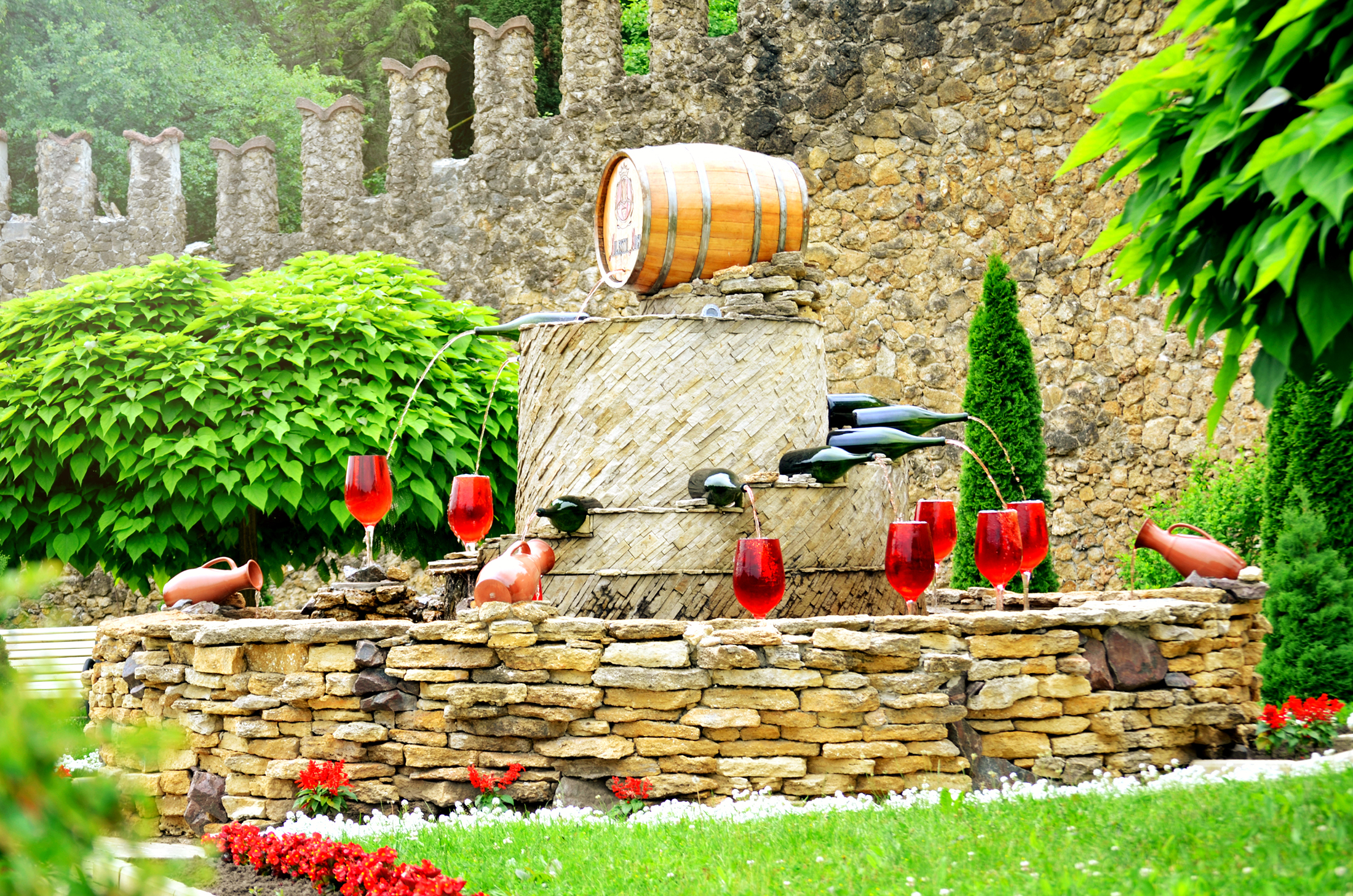 The State Enterprise Quality Wines Industrial Complex “Mileștii Mici” was founded in 1969 to store, preserve and mature high-quality wines. Local ancient underground galleries reach the Chişinău borders. The limestone in the galleries maintains constant humidity (85–95%) and temperature (12–14 °C [54–57 °F])[1] throughout the year. The longer some specific red wines are stored in such ideal conditions, the more they improve. Some wines are cellared for several decades before being sold. The cellars extend for 200 kilometres (120 mi), of which only 55 kilometres (34 mi) are currently in use. In August 2005, Mileștii Mici was registered in the Guinness World Records as the biggest wine collection in the world.[2] Overall, the complex holds nearly 2 million bottles.[1] More than 70% of the stored wines are red, 20% are white and about 10% are dessert wines. The most valuable items of this collection, worth €480 a bottle, were produced in 1973–74; they are now exported only to Japan.
The State Enterprise Quality Wines Industrial Complex “Mileștii Mici” was founded in 1969 to store, preserve and mature high-quality wines. Local ancient underground galleries reach the Chişinău borders. The limestone in the galleries maintains constant humidity (85–95%) and temperature (12–14 °C [54–57 °F])[1] throughout the year. The longer some specific red wines are stored in such ideal conditions, the more they improve. Some wines are cellared for several decades before being sold. The cellars extend for 200 kilometres (120 mi), of which only 55 kilometres (34 mi) are currently in use. In August 2005, Mileștii Mici was registered in the Guinness World Records as the biggest wine collection in the world.[2] Overall, the complex holds nearly 2 million bottles.[1] More than 70% of the stored wines are red, 20% are white and about 10% are dessert wines. The most valuable items of this collection, worth €480 a bottle, were produced in 1973–74; they are now exported only to Japan.
4. Purcari Winery & Chateau Purcari
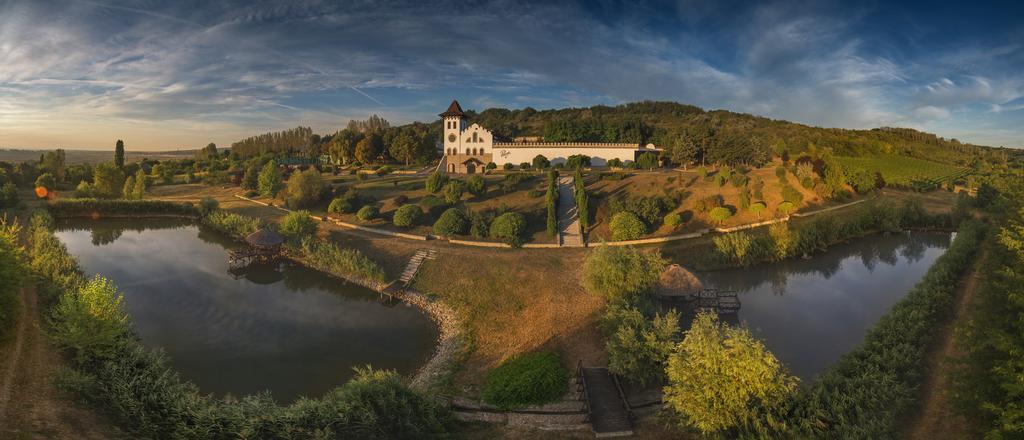
 Nestled in the countryside unfurling between the Dniester River and the Black Sea, Purcari’s modern technologies and traditional delights rests among verdant hillsides. Nearby lakes offer fishing, boating, and other relaxing pursuits that heighten the senses. At the Château, great wines naturally meet with great gastronomic experiences. A la carte food accompanied by wonderful Purcari wines will be appreciated by food connoisseurs and discerning travelers. European cuisine lovers will appreciate house specialties – Black Flank Steak and Foie Gras, and those who prefer traditional food can taste the masterpieces of Moldovan cuisine (developed on a frontier where several ethnic traditions of Europe blend together).
Nestled in the countryside unfurling between the Dniester River and the Black Sea, Purcari’s modern technologies and traditional delights rests among verdant hillsides. Nearby lakes offer fishing, boating, and other relaxing pursuits that heighten the senses. At the Château, great wines naturally meet with great gastronomic experiences. A la carte food accompanied by wonderful Purcari wines will be appreciated by food connoisseurs and discerning travelers. European cuisine lovers will appreciate house specialties – Black Flank Steak and Foie Gras, and those who prefer traditional food can taste the masterpieces of Moldovan cuisine (developed on a frontier where several ethnic traditions of Europe blend together).
And if you ever get bored while travelling, we can recommend you try your talent in crocheting a cute traveller bear.
5. Et Cetera Winery
Et Cetera is a family adventure which turned into a winery owned by two brothers.
The story of the winery began in 2002, when Alexandru Luchianov, one of the brothers, bought fields in the South of the country now housing the vineyards, a restaurant, and a small hotel. Love and care are paramount for maintaining the well-being of a family, and this approach was also the guarantee of the success of “Et Cetera”.
6. Chateau Cojușna – Migal P

7. Braneshti Cellars
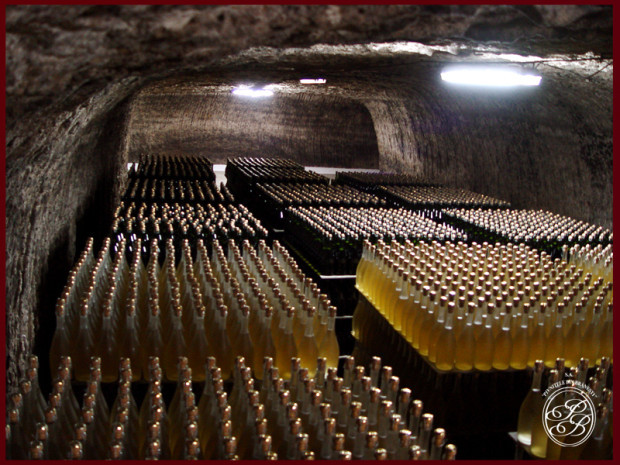
8. KVINT Winery & Distillery
 KVINT is a winery and distillery based in Tiraspol, the administrative center of Transnistria. Kvint products are certified ‘Made in Moldova’. Founded in 1897, the company produced only vodka until 1938, when it began producing brandies.[2] It is the oldest still-operating commercial enterprise in the region. Locals consider KVINT a national treasure and a symbol of their country. Its factory is shown on the 5 Transnistrian ruble banknote.
KVINT is a winery and distillery based in Tiraspol, the administrative center of Transnistria. Kvint products are certified ‘Made in Moldova’. Founded in 1897, the company produced only vodka until 1938, when it began producing brandies.[2] It is the oldest still-operating commercial enterprise in the region. Locals consider KVINT a national treasure and a symbol of their country. Its factory is shown on the 5 Transnistrian ruble banknote.
9. The museum house of “Alexandru Donici”
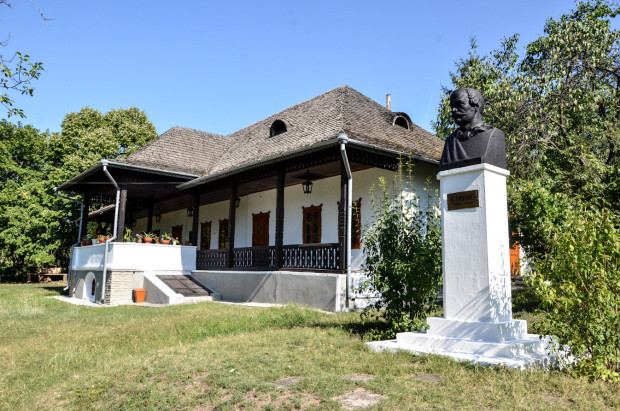 The Bessarabian fabulist poet has a wonderful house in the village that bears his name, located in Orhei. The museum house proves to have a long history – from his childhood to the creation of the classic Moldovan literature. The museum is located in a well-arranged area, with a beautiful park, a pool and, of course, the monument of the writer.
The Bessarabian fabulist poet has a wonderful house in the village that bears his name, located in Orhei. The museum house proves to have a long history – from his childhood to the creation of the classic Moldovan literature. The museum is located in a well-arranged area, with a beautiful park, a pool and, of course, the monument of the writer.
10. Manuc Bei Mansion & Museum
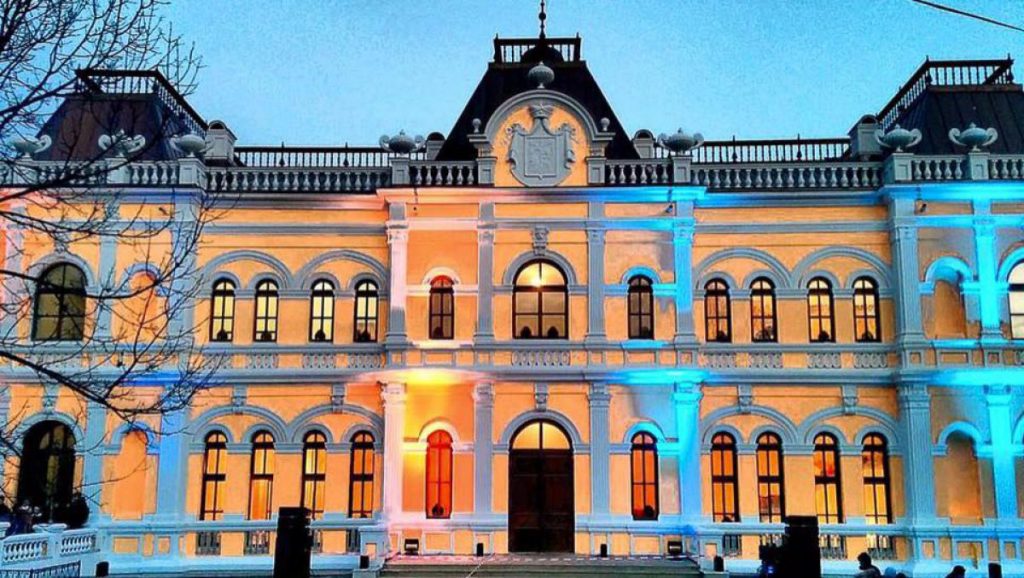
Manuc Bei Mansion or Manuc Bey Mansion (officially – Historical architectural complex Manuc Bey) is located in Hincești city in the central-western part of the Republic of Moldova; and it includes the following edifices: Palace of Manuc, House of bailiff, Countess House, Hunting Castle, Watchtower and others.
Although the mansion bears his name, it was not built by the diplomat and the merchant of the Armenian origin Manuc Bei Mirzaian, as it is said (he died within a short time after the purchase of Hincesti estate, in 1817), but by his successors – son Murat who has initiated the construction of the manorial villa and the nephew of the diplomat named Grigore who has finished the respective works. The mansion also is an architectural monument recorded in the Register of cultural monuments of the Republic of Moldova.
11. Pushkin House Museum, Chisinau
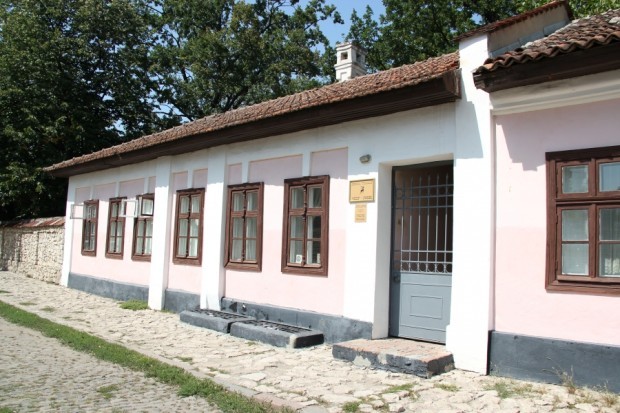 The great Russian poet Alexander Pushkin was exiled to Bessarabia (nowadays Moldova) for three years by the tsarist administration. He arrived in Chisinau on September 21, 1820, and stayed at the house of General Inzov, which today hosts the museum of Pushkin and is one of only two remaining Pushkin houses in the world; the other being is at Moika, St. Petersburg, Russia. Over the three years that Pushkin spent in Bessarabia, he had written a number poems, including the first part of the world-famous “Eugeny Onegin” and many others.
The great Russian poet Alexander Pushkin was exiled to Bessarabia (nowadays Moldova) for three years by the tsarist administration. He arrived in Chisinau on September 21, 1820, and stayed at the house of General Inzov, which today hosts the museum of Pushkin and is one of only two remaining Pushkin houses in the world; the other being is at Moika, St. Petersburg, Russia. Over the three years that Pushkin spent in Bessarabia, he had written a number poems, including the first part of the world-famous “Eugeny Onegin” and many others.
12. National Art Museum of Moldova
 The National Art Museum of Moldova is the only institution of its kind in Moldova. The art of beauty dominates in the both exterior and interior architecture of the building. The museum has a splendid collection of masterpieces of the great autochthonous and European painters, as well as those from Russia, Western Europe, Japan, India, China.
The National Art Museum of Moldova is the only institution of its kind in Moldova. The art of beauty dominates in the both exterior and interior architecture of the building. The museum has a splendid collection of masterpieces of the great autochthonous and European painters, as well as those from Russia, Western Europe, Japan, India, China.
13. D. Kara-Ceoban Gagauz History Museum
 In the south of Moldova, 110 km from Chisinau, in Gagauzia, in the village. Besalma is home to the Gagauz Museum of History and Ethnography. One of the prominent people of this people was Dmitri Kara-Chobanu, a writer, film director, sculptor and artist – an expert in Gagauz culture and folklore.
In the south of Moldova, 110 km from Chisinau, in Gagauzia, in the village. Besalma is home to the Gagauz Museum of History and Ethnography. One of the prominent people of this people was Dmitri Kara-Chobanu, a writer, film director, sculptor and artist – an expert in Gagauz culture and folklore.
14. National Museum of Ethnography and Natural History
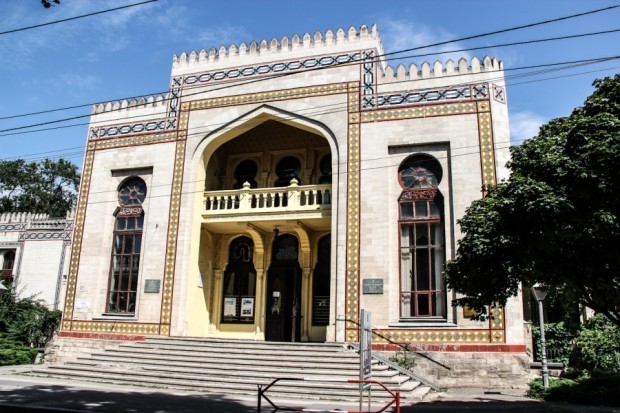
 The National Museum of Ethnography and Natural History was founded in October 1889 on the basis of the collection of exhibits of the first agricultural exhibition of Bessarabia at the initiative of Baron A. Stuart. Thus, it is the oldest museum in the Republic of Moldova, functioning at the moment. First there was the Museum of Agriculture, then the Museum of Zoology, Agriculture and Folk Crafts of Provincial Zemstvos. Since 1926 – the National Museum of Natural History of Chisinau, since 1937 – the Regional Museum of Bessarabia, since 1940 – the Republican Museum of the MSSR, since 1957 – the State Museum of History and Study of the Motherland, since 1983 – the State Museum of the Study of the Motherland. Since 1991 the museum has received its modern name.
The National Museum of Ethnography and Natural History was founded in October 1889 on the basis of the collection of exhibits of the first agricultural exhibition of Bessarabia at the initiative of Baron A. Stuart. Thus, it is the oldest museum in the Republic of Moldova, functioning at the moment. First there was the Museum of Agriculture, then the Museum of Zoology, Agriculture and Folk Crafts of Provincial Zemstvos. Since 1926 – the National Museum of Natural History of Chisinau, since 1937 – the Regional Museum of Bessarabia, since 1940 – the Republican Museum of the MSSR, since 1957 – the State Museum of History and Study of the Motherland, since 1983 – the State Museum of the Study of the Motherland. Since 1991 the museum has received its modern name.
15. The National Museum of History of Moldova
 The National Museum of Archaeology and History of Moldova is one of the most important museum institutions of the Republic of Moldova, in terms of its collection and scientific prestige. The museum was established on December 21, 1983, when there was issued the Order of the Ministry of Culture No. 561 “On reprofiling of the Museums” (on the basis of the Joint Decree of the Central Committee of the CPM and the Council of Ministers of MSSR “On the utilization of the historical monument – the edifice of the former Chisinau Boys’ Gymnasia where S. Lazo studied” from 29 November 1983).
The National Museum of Archaeology and History of Moldova is one of the most important museum institutions of the Republic of Moldova, in terms of its collection and scientific prestige. The museum was established on December 21, 1983, when there was issued the Order of the Ministry of Culture No. 561 “On reprofiling of the Museums” (on the basis of the Joint Decree of the Central Committee of the CPM and the Council of Ministers of MSSR “On the utilization of the historical monument – the edifice of the former Chisinau Boys’ Gymnasia where S. Lazo studied” from 29 November 1983).
16. Ralli Manor Mansion
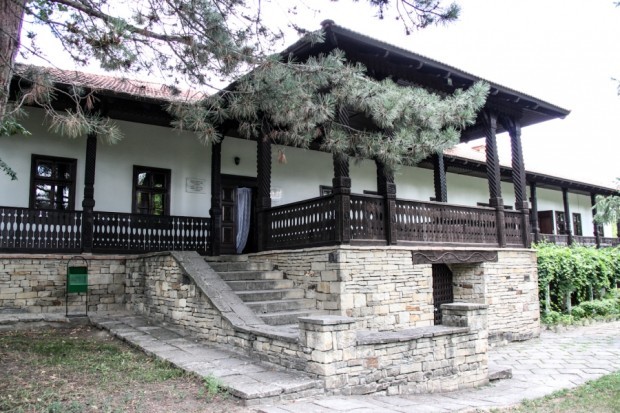 Manor of Zamfir Ralli, one of the most active leaders in Basarabia in the beginning of the XIX., famous not so much by its masters, but by many famous guests: during his basarabian exil Alexander Pushkin lived here for some time. Family Rally was very progressive for its time. Its head, Zamfir Ralli-Arbore, arrived in Moldova from Wallachia and voluntarily adopted Russian citizenship. His wife, Smaranda, belonged to an ancient family, fellowships of Stefan cel Mare. Secular salon Rally was one of the finest in Moldova, so that it is not surprising that the exiled metropolitan poet became frequenter. He became friends with one of Rally five sons, Ivan, in whose apartment in Chisinau he spent most of his time.
Manor of Zamfir Ralli, one of the most active leaders in Basarabia in the beginning of the XIX., famous not so much by its masters, but by many famous guests: during his basarabian exil Alexander Pushkin lived here for some time. Family Rally was very progressive for its time. Its head, Zamfir Ralli-Arbore, arrived in Moldova from Wallachia and voluntarily adopted Russian citizenship. His wife, Smaranda, belonged to an ancient family, fellowships of Stefan cel Mare. Secular salon Rally was one of the finest in Moldova, so that it is not surprising that the exiled metropolitan poet became frequenter. He became friends with one of Rally five sons, Ivan, in whose apartment in Chisinau he spent most of his time.
17. Soroca Fortress
 Soroca Fortress (Romanian: Cetatea Soroca) is a historic fort in the Republic of Moldova, in the modern-day city of Soroca. The original wooden fort, which defended a ford over the Dniester (Moldovan/Romanian: Nistru), was an important link in the chain of fortifications which comprised four forts (e.g. Akkerman and Khotin) on the Dniester, two forts on the Danube and three forts on the north border of medieval Moldova. Between 1543 and 1546 under the rule of Petru Rareş, the fortress was rebuilt in stone as a perfect circle with five bastions situated at equal distances. During the Great Turkish War, John Sobieski‘s forces successfully defended the fortress against the Ottomans. It was of vital military importance during the Pruth Campaign of Peter the Great in 1711. The stronghold was sacked by the Russians in the Russo-Turkish War (1735–1739). The Soroca fortress is an important attraction in Soroca, having preserved cultures and kept the old Soroca in the present day.
Soroca Fortress (Romanian: Cetatea Soroca) is a historic fort in the Republic of Moldova, in the modern-day city of Soroca. The original wooden fort, which defended a ford over the Dniester (Moldovan/Romanian: Nistru), was an important link in the chain of fortifications which comprised four forts (e.g. Akkerman and Khotin) on the Dniester, two forts on the Danube and three forts on the north border of medieval Moldova. Between 1543 and 1546 under the rule of Petru Rareş, the fortress was rebuilt in stone as a perfect circle with five bastions situated at equal distances. During the Great Turkish War, John Sobieski‘s forces successfully defended the fortress against the Ottomans. It was of vital military importance during the Pruth Campaign of Peter the Great in 1711. The stronghold was sacked by the Russians in the Russo-Turkish War (1735–1739). The Soroca fortress is an important attraction in Soroca, having preserved cultures and kept the old Soroca in the present day.
18. Tighina Fortress (Transnistria)
 Tighina Fortress (renamed by the Turks as Bender) is a 15th-century fortress on the right bank of the Dniester River in Bender, Moldova, built from earth and wood during the reign of Prince Stephen the Great. In 1538 it was conquered by the Turkish sultan Soliman the Magnificent, who ordered it to be rebuilt in stone and enlarged.
Tighina Fortress (renamed by the Turks as Bender) is a 15th-century fortress on the right bank of the Dniester River in Bender, Moldova, built from earth and wood during the reign of Prince Stephen the Great. In 1538 it was conquered by the Turkish sultan Soliman the Magnificent, who ordered it to be rebuilt in stone and enlarged.
19. Chisinau Alley of Classics
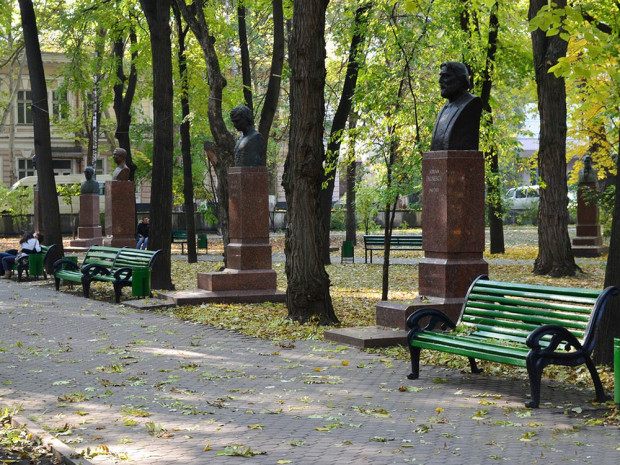 The Alley of Classics (Romanian: Aleea Clasicilor) is a sculptural complex located in the Stephen the Great Park in Central Chișinău, Moldova. The alley is decorated on both sides with red granite busts of classic literary figures and political leaders from Moldova.[2] The alley is located between the Ștefan cel Mare boulevard and the bronze bust of Alexander Pushkin, set on a granite column and made by Russian sculptor Alexander Opekushin.[2] The alley was built and received its name in 1958, and became one of the most important tourist attractions in Chișinău.[3] At first there were only twelve sculptures, but after the fall of the Soviet Union the local authorities added busts of Romanian and Moldovan writers and poets that were banned during the Soviet regime.[2]
The Alley of Classics (Romanian: Aleea Clasicilor) is a sculptural complex located in the Stephen the Great Park in Central Chișinău, Moldova. The alley is decorated on both sides with red granite busts of classic literary figures and political leaders from Moldova.[2] The alley is located between the Ștefan cel Mare boulevard and the bronze bust of Alexander Pushkin, set on a granite column and made by Russian sculptor Alexander Opekushin.[2] The alley was built and received its name in 1958, and became one of the most important tourist attractions in Chișinău.[3] At first there were only twelve sculptures, but after the fall of the Soviet Union the local authorities added busts of Romanian and Moldovan writers and poets that were banned during the Soviet regime.[2]
20. Stephen the Great Monument, Chisinau
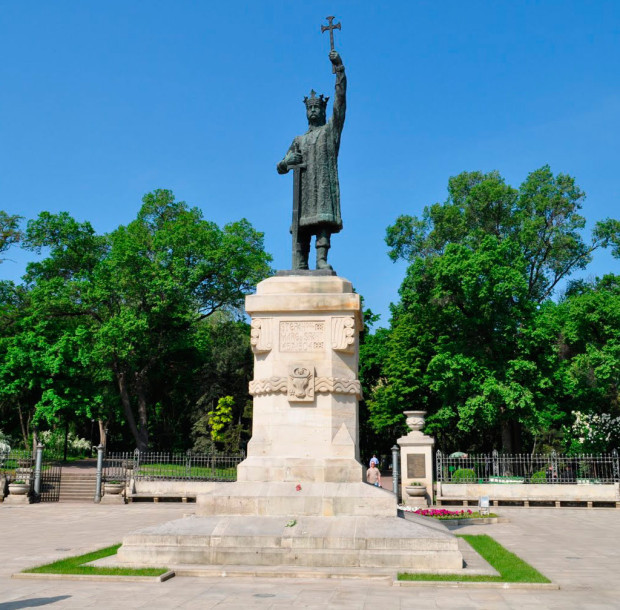 The monument to Stephen the Great was designed by architect Alexandru Plămădeală in 1923. It was erected near the main entrance of the Stephen the Great Park in Central Chișinău. The monument was completed in 1927 and opened on 29 April 1928 (to replace the monument to Alexander II of Russia, destroyed by the Romanian authorities in 1918). The total cost of the monument was 4.000.000 lei.
The monument to Stephen the Great was designed by architect Alexandru Plămădeală in 1923. It was erected near the main entrance of the Stephen the Great Park in Central Chișinău. The monument was completed in 1927 and opened on 29 April 1928 (to replace the monument to Alexander II of Russia, destroyed by the Romanian authorities in 1918). The total cost of the monument was 4.000.000 lei.
21. The Candle of Gratitude Monument, Soroca
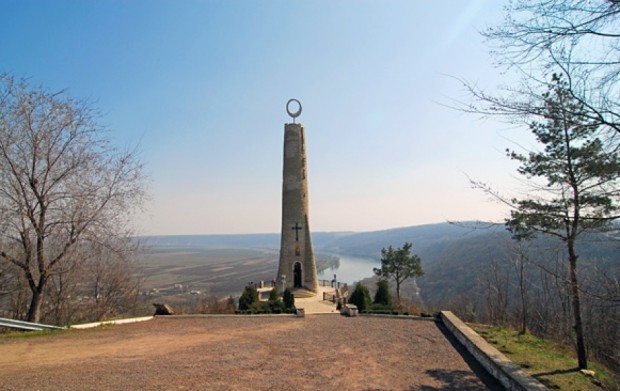 The Candle of Gratitude Monument is one of the best monuments in Moldova. The monument is built on the rocks over the Nistru River. It is also considered as a very special work of art for another reason. It is actually built in the memory of the cultural monuments in Moldova that were destroyed in the past. Time stands still when it passes through this monument. It is a silent witness of many hopes and agonies, dreams and hard works of many past generations.
The Candle of Gratitude Monument is one of the best monuments in Moldova. The monument is built on the rocks over the Nistru River. It is also considered as a very special work of art for another reason. It is actually built in the memory of the cultural monuments in Moldova that were destroyed in the past. Time stands still when it passes through this monument. It is a silent witness of many hopes and agonies, dreams and hard works of many past generations.
22. The Triumphal Arch and the Nativity Cathedral with nearby parks

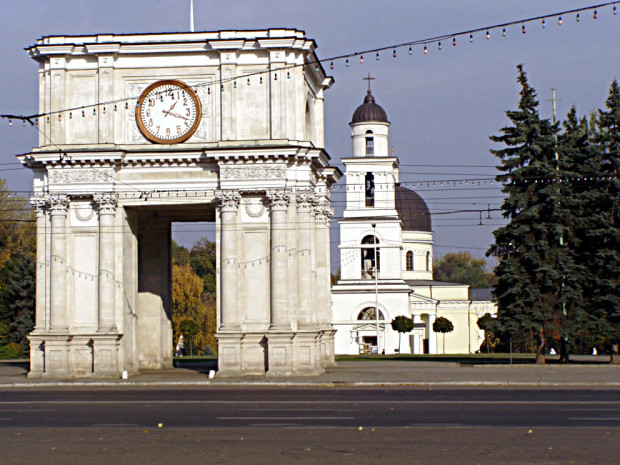 The Triumphal Arch was built in 1840 by the architect I. Zauschevic and thanks to the governor’s of Bessarabia initiative to commemorate the victory of the Russian Empire over the Ottoman Empire during the Russo-Turkish War (1828–29). From its construction to 2011 the monument sheltered at its second level a huge bell of nearly 6.400 kg (400 Puduri). The Cathedral of Christ’s Nativity (Romanian: Catedrala Mitropolitană Nașterea Domnului) is the main cathedral of the Moldovan Orthodox Church in Central Chișinău, Moldova. It was commissioned by the governor of New Russia, Prince Mikhail Semyonovich Vorontsov, and Metropolitan Gavril Bănulescu-Bodoni in 1830. The cathedral was built in the 1830s to a Neoclassical design by Abram Melnikov (who had designed a similar church in Bolhrad). The cathedral was bombed during World War II, and its bell tower was destroyed by the local Communists in 1962. The new bell tower was constructed in 1997. During the Soviet period, worship was prohibited and the cathedral was transformed into an exhibition center.
The Triumphal Arch was built in 1840 by the architect I. Zauschevic and thanks to the governor’s of Bessarabia initiative to commemorate the victory of the Russian Empire over the Ottoman Empire during the Russo-Turkish War (1828–29). From its construction to 2011 the monument sheltered at its second level a huge bell of nearly 6.400 kg (400 Puduri). The Cathedral of Christ’s Nativity (Romanian: Catedrala Mitropolitană Nașterea Domnului) is the main cathedral of the Moldovan Orthodox Church in Central Chișinău, Moldova. It was commissioned by the governor of New Russia, Prince Mikhail Semyonovich Vorontsov, and Metropolitan Gavril Bănulescu-Bodoni in 1830. The cathedral was built in the 1830s to a Neoclassical design by Abram Melnikov (who had designed a similar church in Bolhrad). The cathedral was bombed during World War II, and its bell tower was destroyed by the local Communists in 1962. The new bell tower was constructed in 1997. During the Soviet period, worship was prohibited and the cathedral was transformed into an exhibition center.
23. Old Orhei

 Old Orhei (Romanian: Orheiul Vechi) is a Moldovan historical and archaeological complex located in Trebujeni, which is approximately 60 kilometres (37 mi) north-east of Chișinău on the Răut River in the Republic of Moldova. The ancient city of Orheiul Vechi is a natural and historical complex, located in a narrow bend of the Răut River. The natural landscape of limestone rock, eroded by the river, is combined with archaeological vestiges of the ancient Trypillian civilization. As a result of archaeological excavations, cultural layers were discovered from different epochs, such as the Paleolithic, Eneolithic, and Iron Age.
Old Orhei (Romanian: Orheiul Vechi) is a Moldovan historical and archaeological complex located in Trebujeni, which is approximately 60 kilometres (37 mi) north-east of Chișinău on the Răut River in the Republic of Moldova. The ancient city of Orheiul Vechi is a natural and historical complex, located in a narrow bend of the Răut River. The natural landscape of limestone rock, eroded by the river, is combined with archaeological vestiges of the ancient Trypillian civilization. As a result of archaeological excavations, cultural layers were discovered from different epochs, such as the Paleolithic, Eneolithic, and Iron Age.
24. Saharna Monastery and nearby waterfalls 
The Saharna Monastery (Romanian: Mănăstirea Saharna) is a monastery in Saharna, Moldova. The “Holy Trinity” Monastery of Saharna,[1] situated about 110 km north of Chișinău, on the west side of the Nistru River, is considered to be one of the biggest centres for religious pilgrimages in Moldova. Here can be found the unique relics of the Blessed Macarie, and on the top of the high cliff, according to a legend, there is a footprint of St. Maria, the Mother of Jesus. The legend says that a monk from the monastery once saw the shining figure of Saint Maria on the top of a rock. When reaching that spot the monk saw a mark of a footstep on the ground.
25. Tipova Cave Monastery
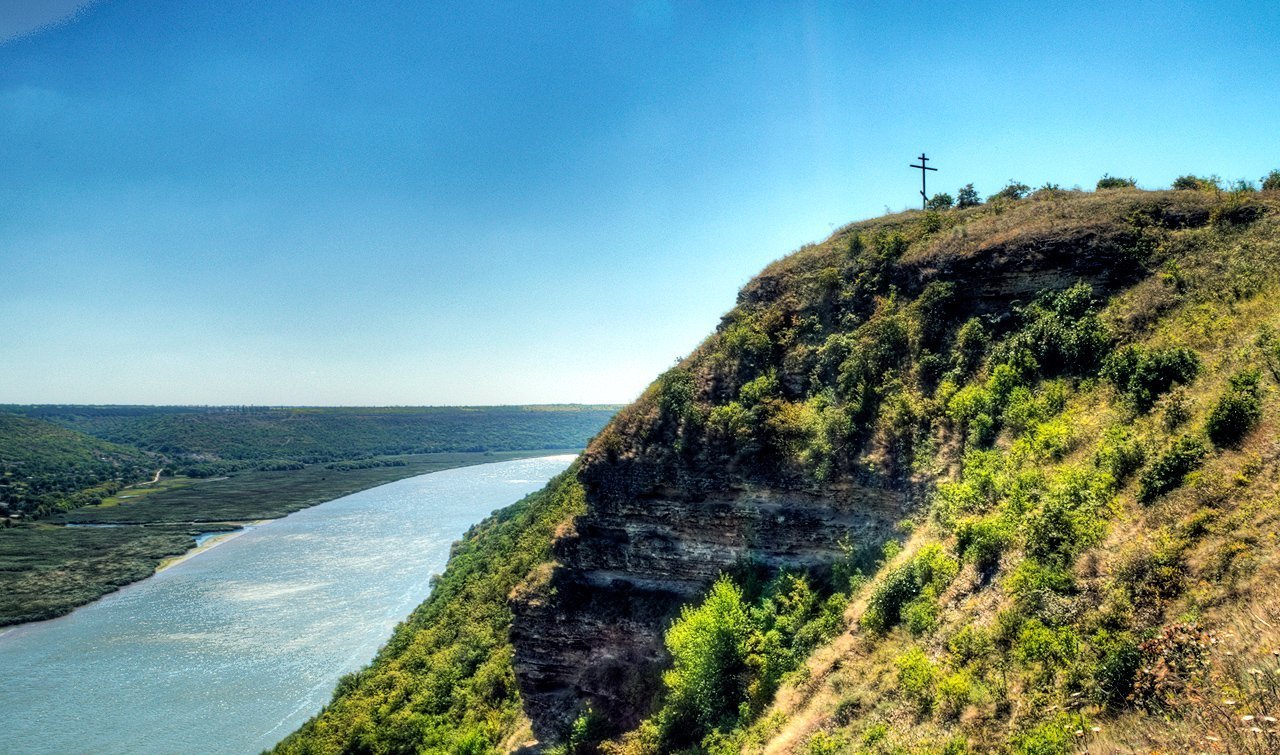 The fantastic Tipova Cave Monastery is built into cliffs that tower some 200m above the Dniestr River’s right (west) bank, in the tiny village of Tipova some 95km northeast of Chişinău. The monastery consists of three religious chambers and monastic cells linked by precarious steps built into the rock face. The oldest of the three chambers, the Elevation of the Holy Cross cave church, is thought to date from the 11th century. Dress appropriately to enter any religious areas.
The fantastic Tipova Cave Monastery is built into cliffs that tower some 200m above the Dniestr River’s right (west) bank, in the tiny village of Tipova some 95km northeast of Chişinău. The monastery consists of three religious chambers and monastic cells linked by precarious steps built into the rock face. The oldest of the three chambers, the Elevation of the Holy Cross cave church, is thought to date from the 11th century. Dress appropriately to enter any religious areas.
26. Many Monasteries across the Country
Capriana Monastery (below)
Curchi Monastery (below)
Frumoasa Monastery (below)
Hancu Monastery (below)
Harjauca Monastery (below)
And if Moldova isn’t enough…
We can also recommend you checking our this awesome list of attractions to visit in Bucharest.
Modificat: noiembrie 28, 2022

